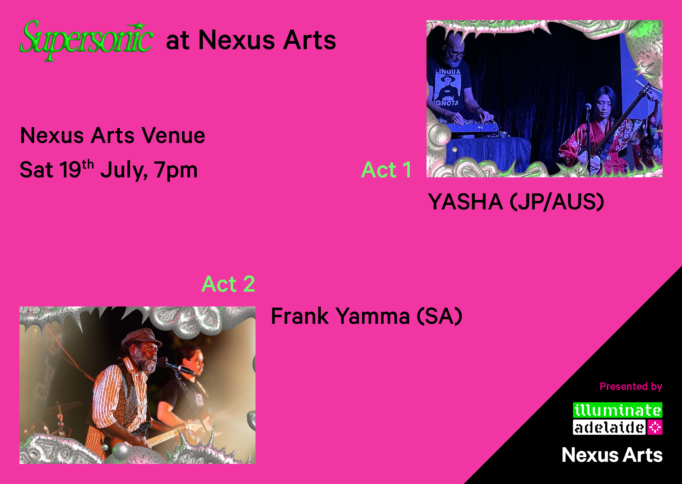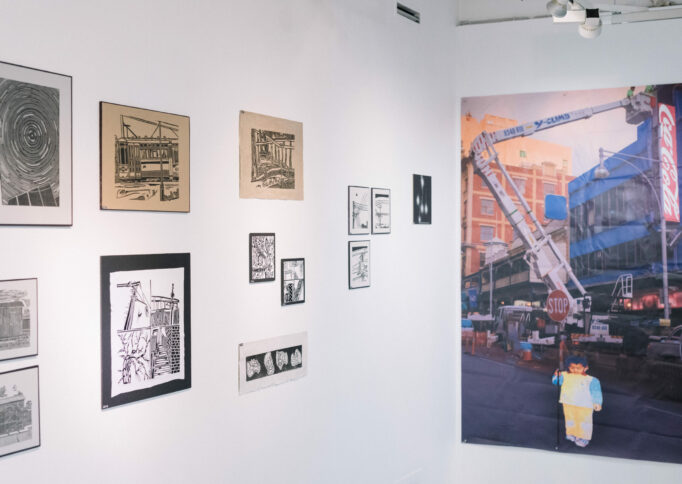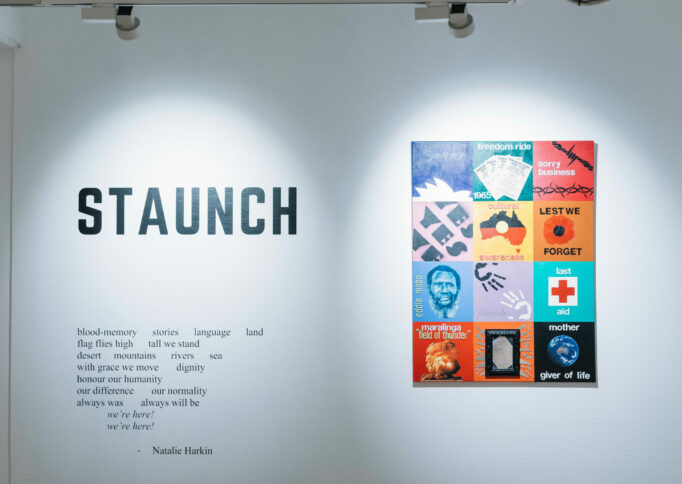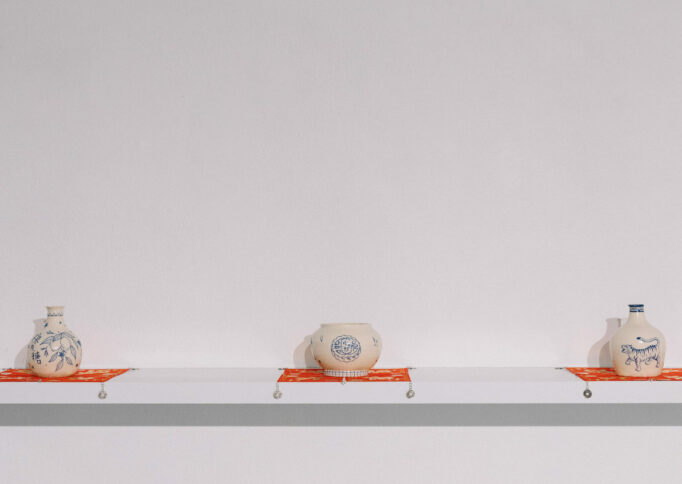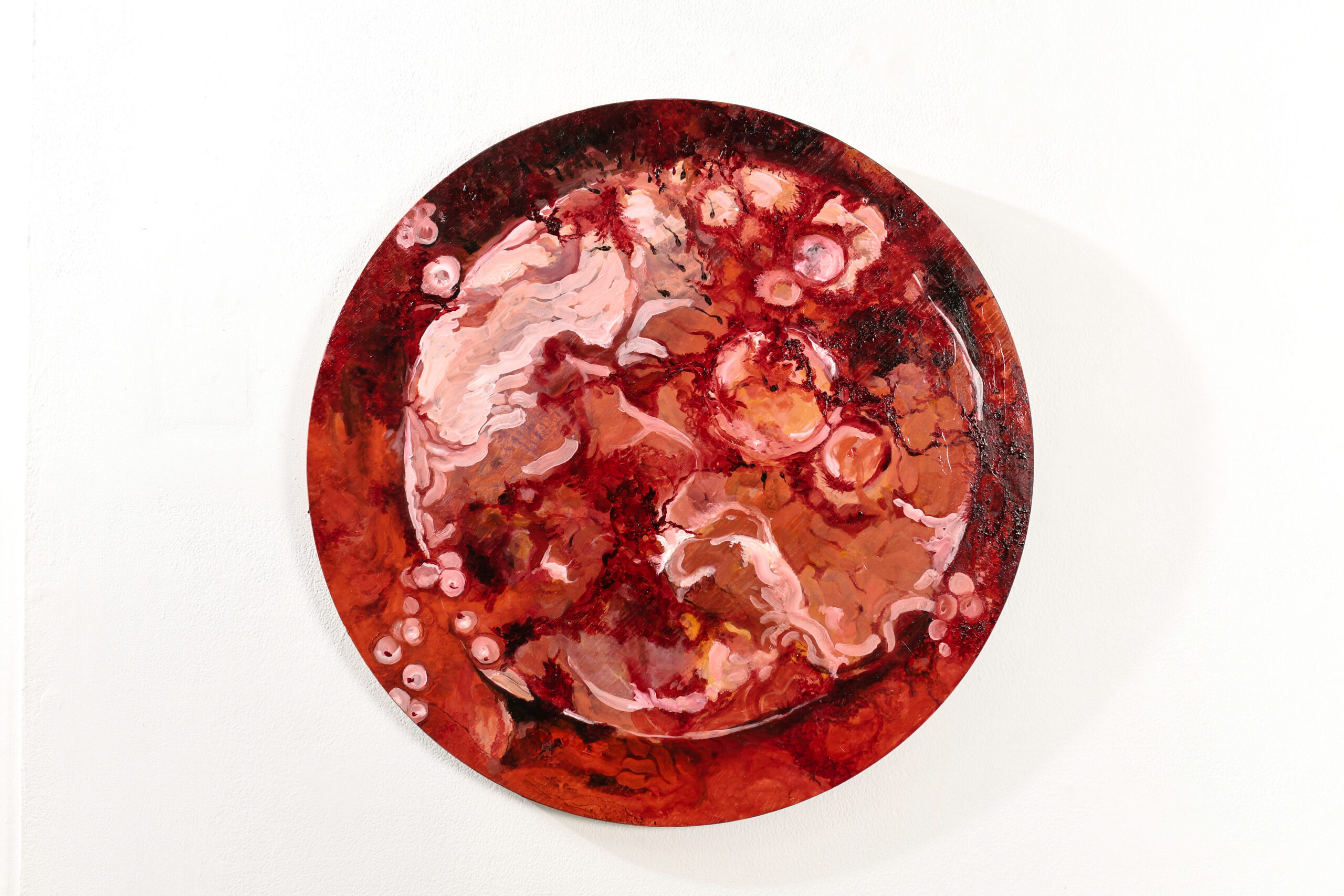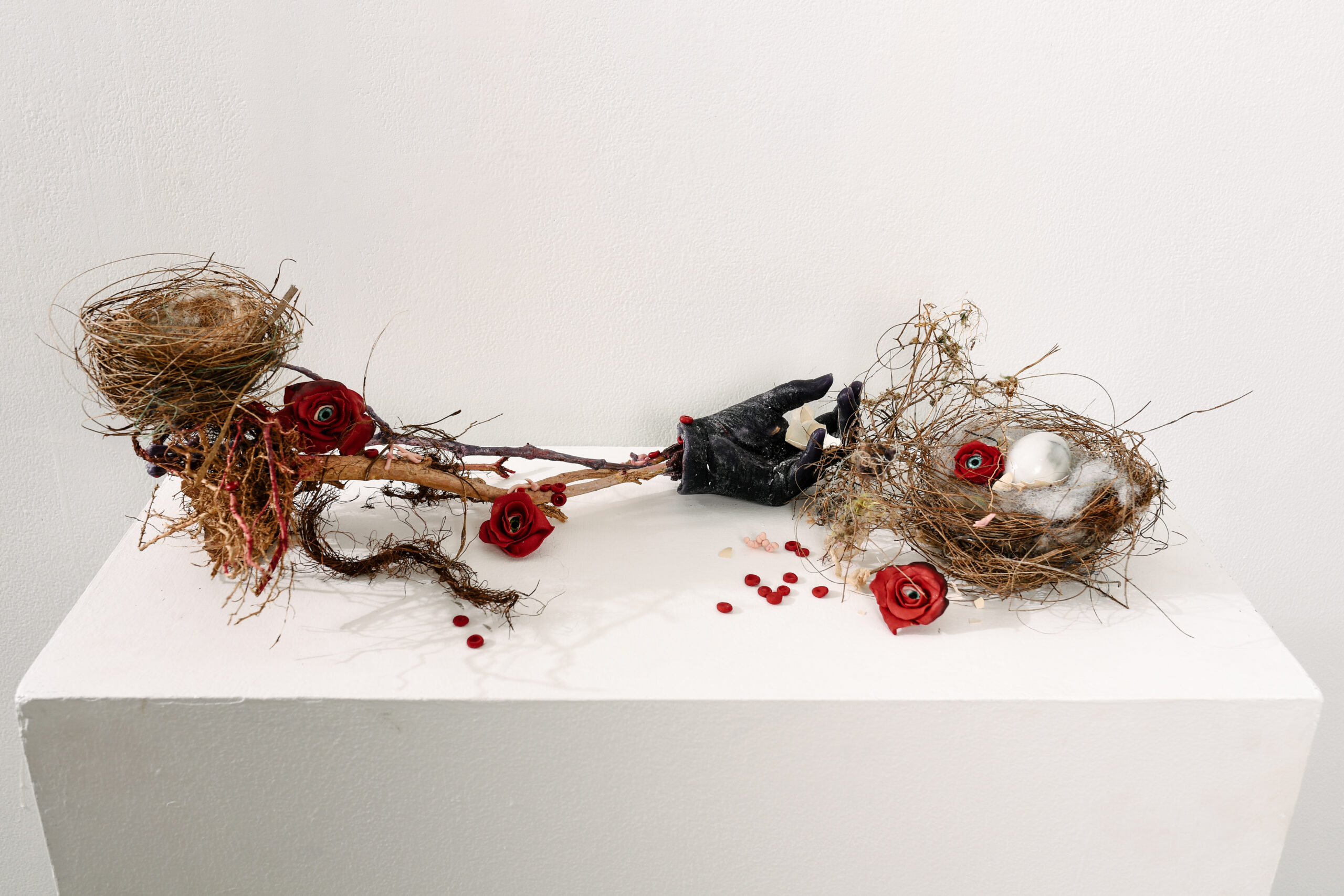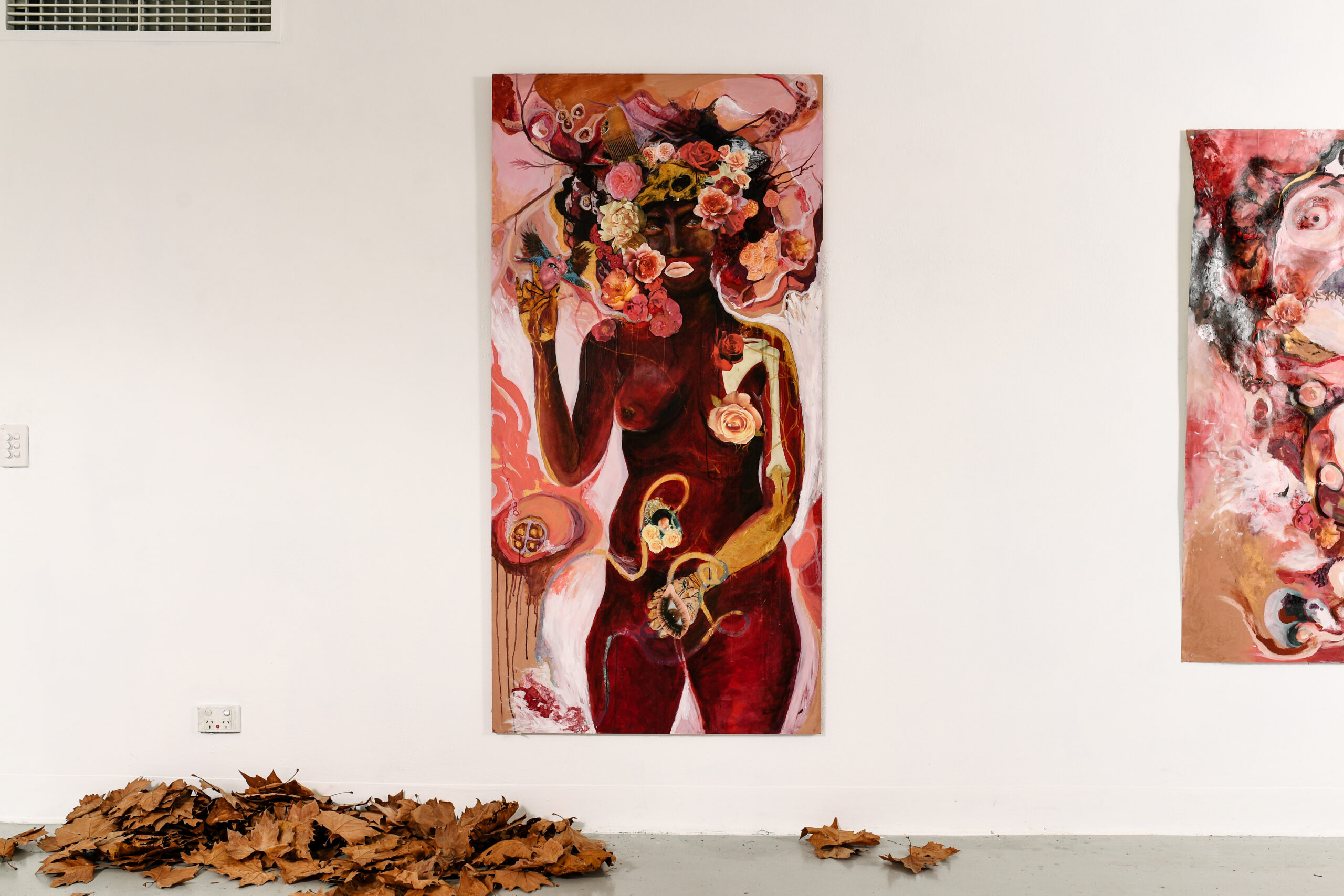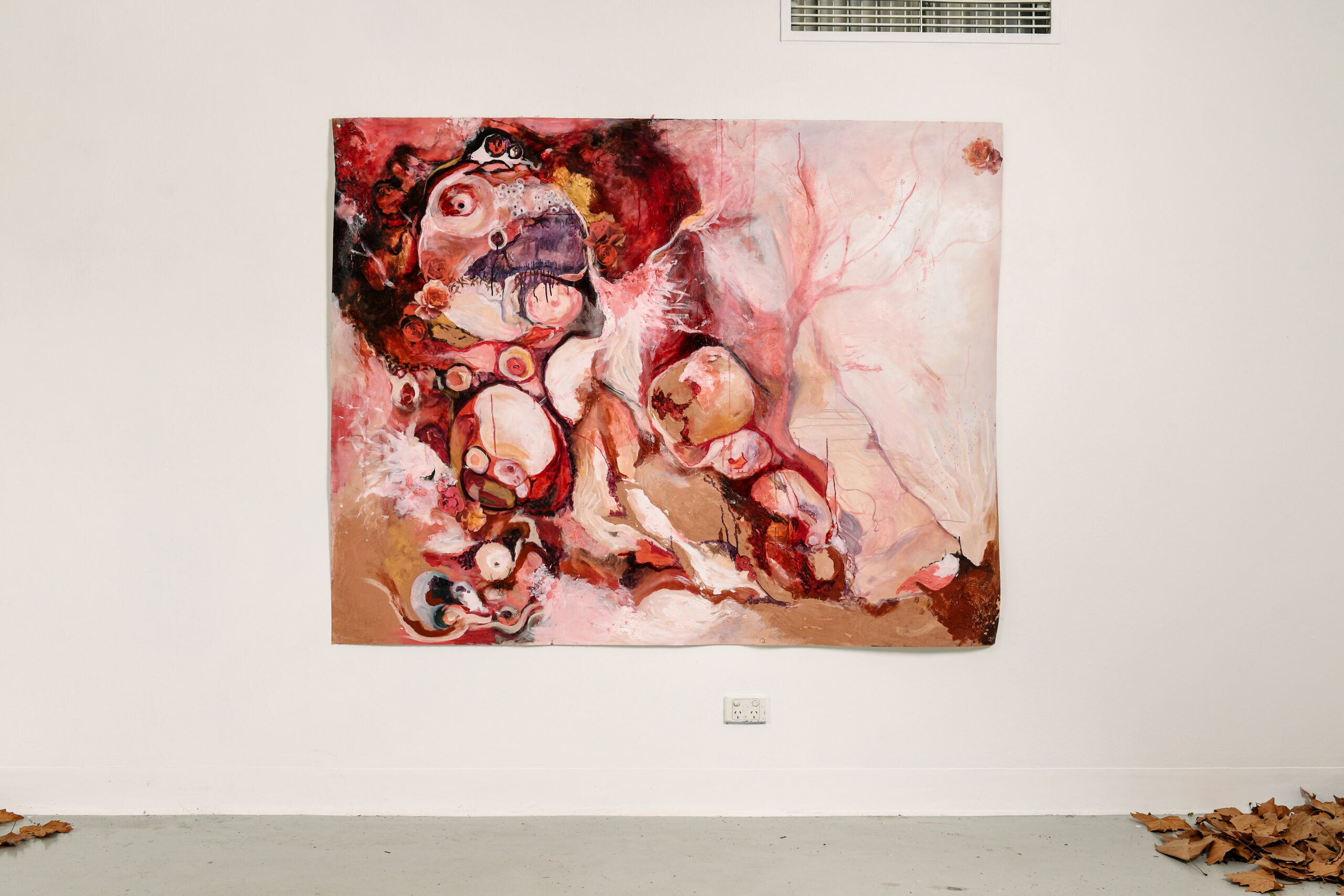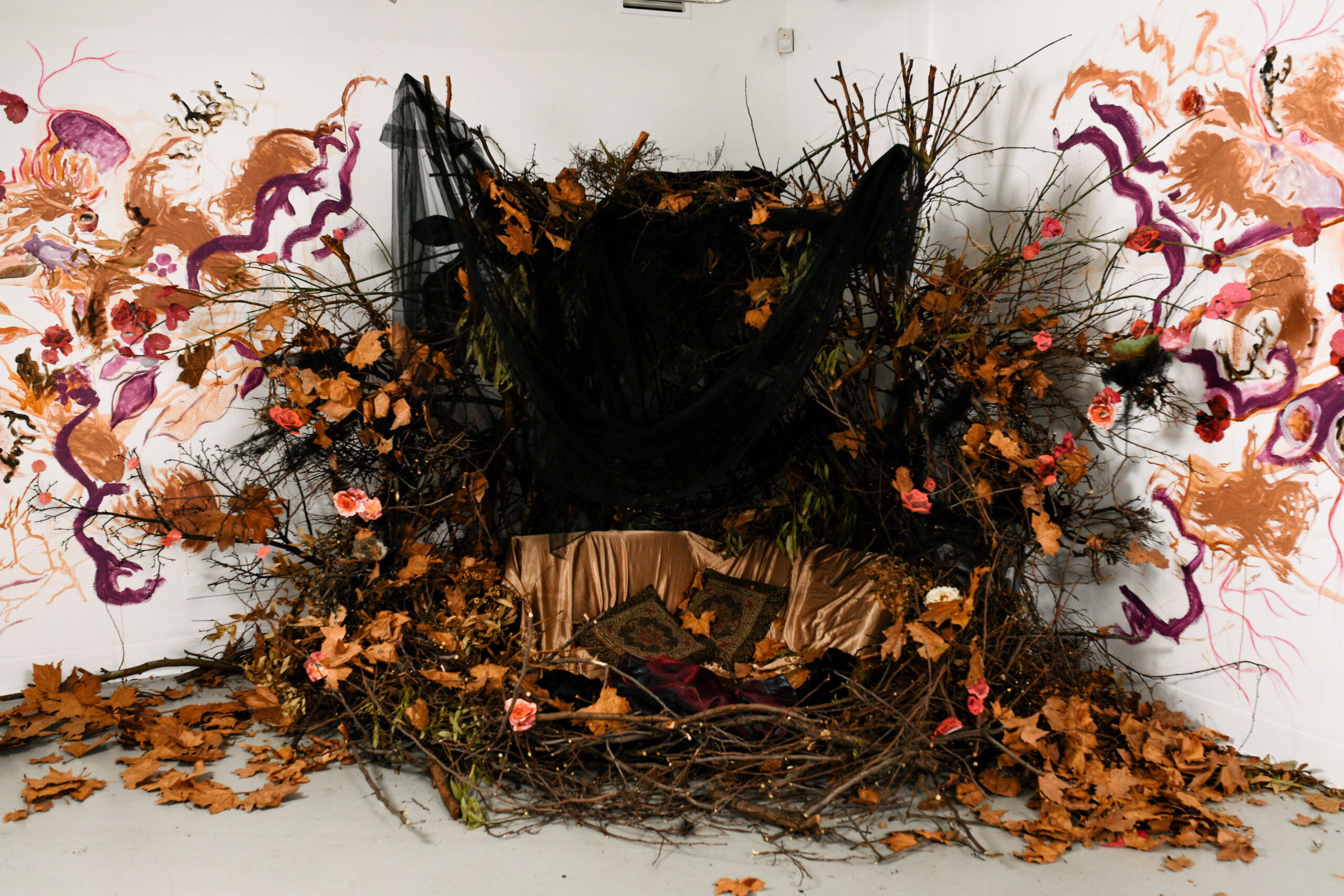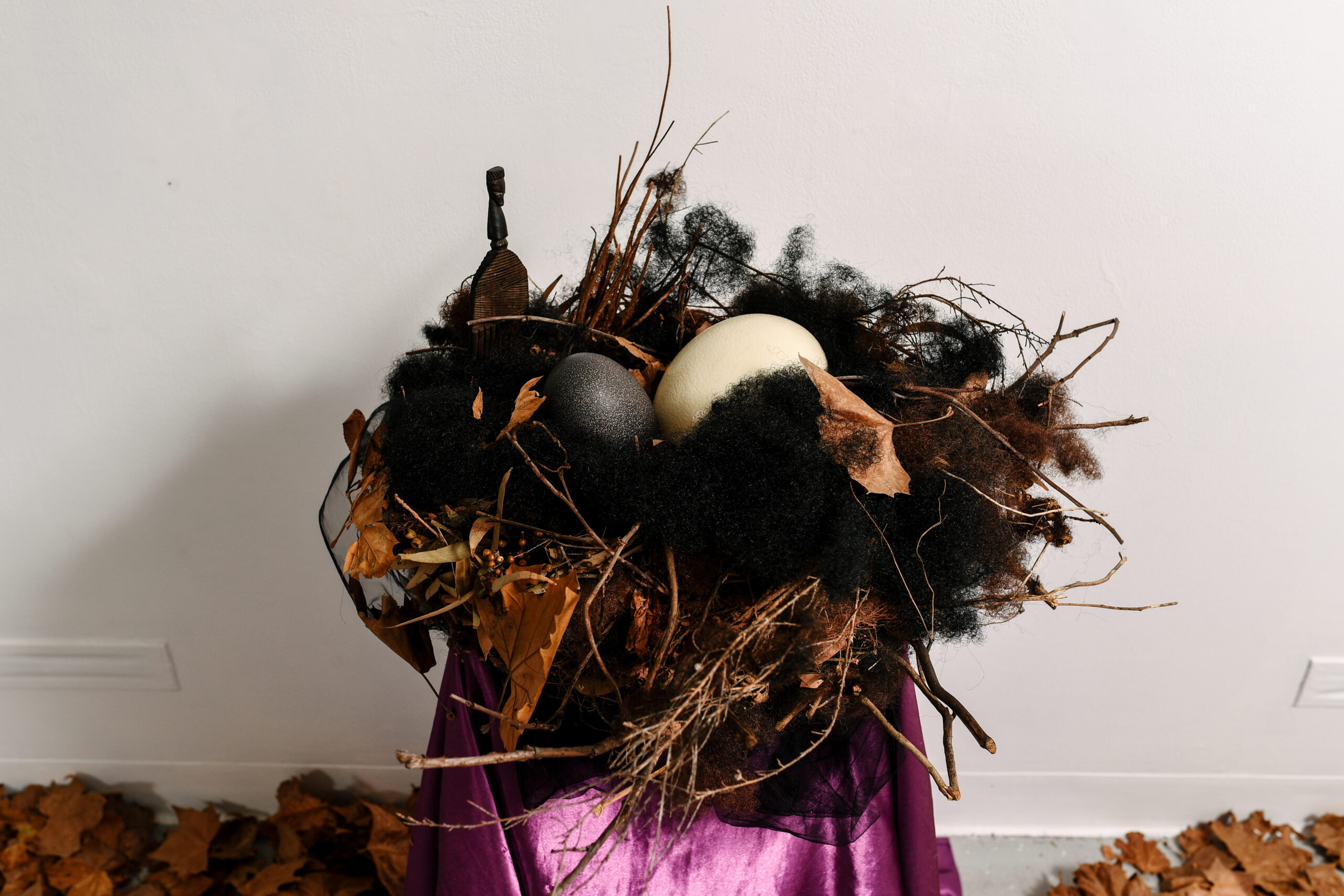Exhibition
NEST: A Place Called Home
Tailor Winston
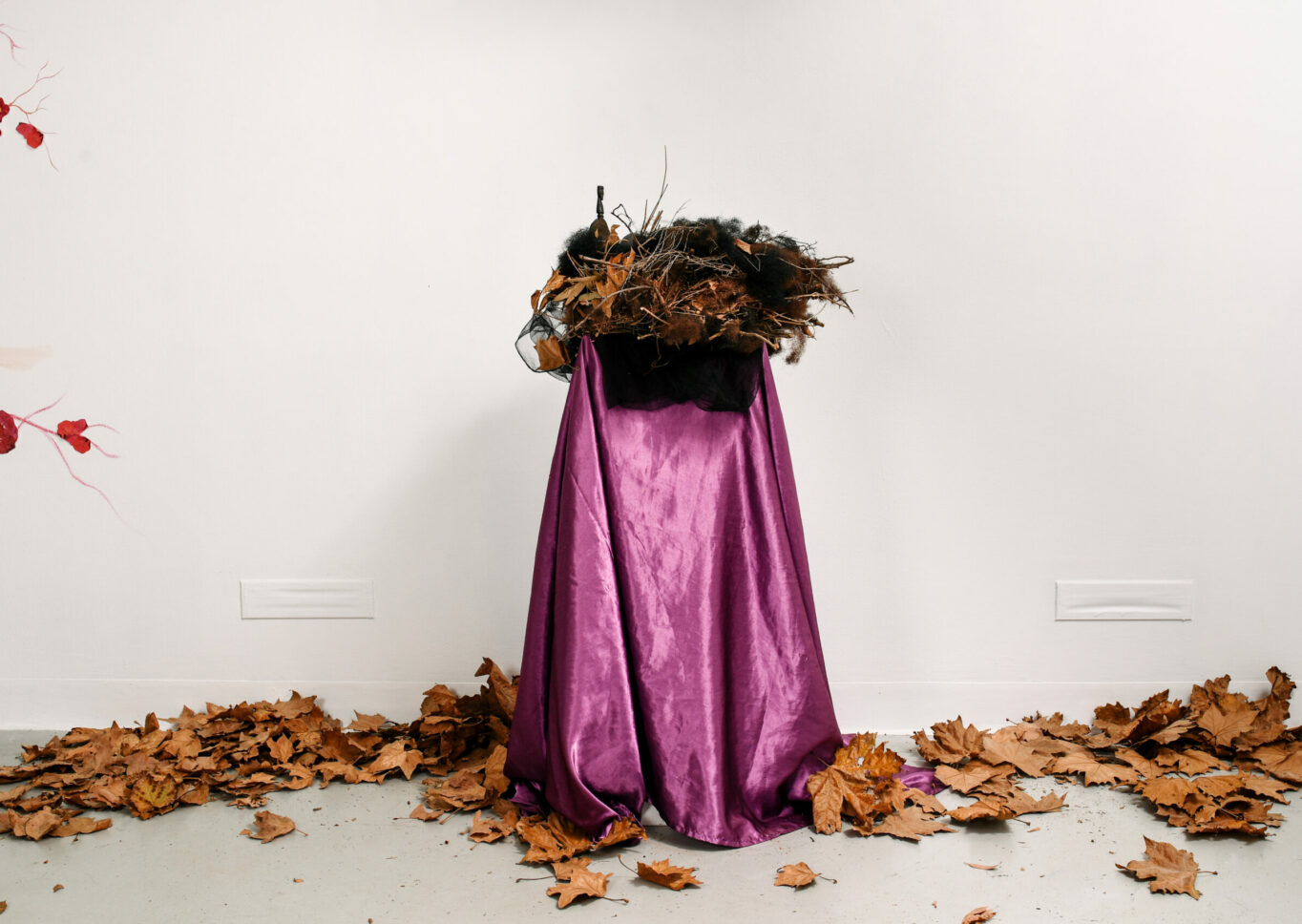
Photo: Morgan Sette
About the exhibition
NEST: A Place Called Home is an evocative, sentimental, and thoughtful exhibition that calls attention to cultural awareness and personal boundaries. Inspired by the childhood urban myth of not putting your hand into a bird’s nest or the mother will reject her eggs when she returns, this sculptural and performative piece retells this mythology while commenting on the socio-cultural climate of contemporary Australian society.
Embodying multiple metaphors concerning gender, personal autonomy, and the cultural importance and significance of Afrocentric hair, Winston creates the conditions for curiosity in the audience member, emphasising the symbolism of the nest as a sacred place of transformation, creativity, and life.
Explore the exhibition
-
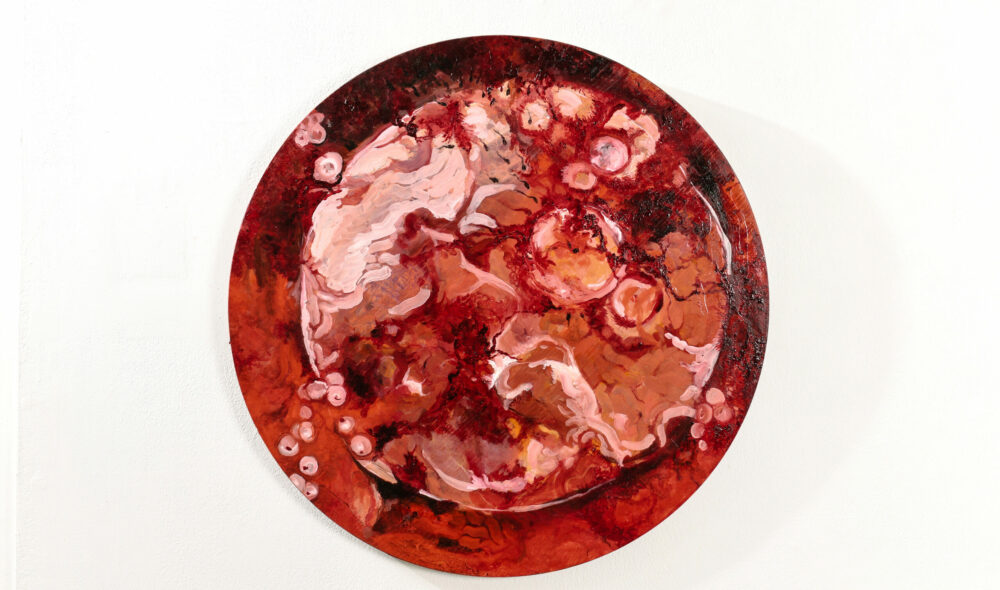
Photo: Morgan Sette
- Artwork Fertility Blessing
- Artist Tailor Winston
- Year 2021
- Medium Oil on wood
- Size 96 cm (diameter)
- Price $550
If you are interested in buying this artwork, please contact us at info@nexusarts.org.au or via the Contact form on this website.
The moment just before conception… What genetic material is contained within each sperm? The egg is open and symbolic to the limitless possibilities of creative potential.
-
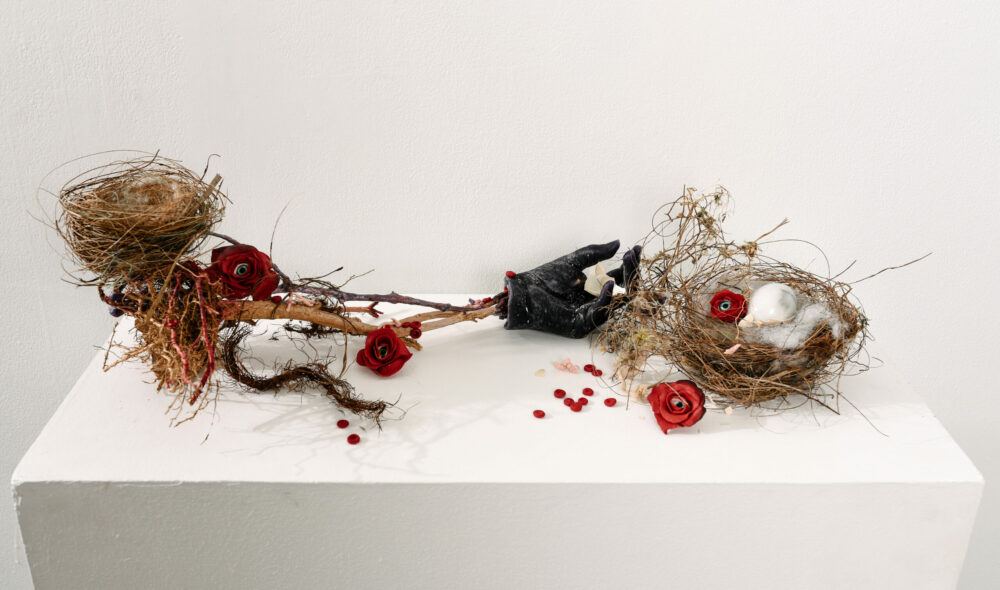
Photo: Morgan Sette
- Artwork Don't Touch My Hair
- Artist Tailor Winston
- Year 2021
- Medium Wax, organic material, polymer clay, glass
- Size Dimensions variable
- Price Not for sale
This piece speaks of many intersecting storylines. We see and contemplate the action of taking the egg from the nest… Or perhaps it is an uninvited hand feeling its way into someone’s hair. Maybe it speaks about the act of colonisation of people and land. This intimate assault contemplates positions of power and ownership that call into question what feelings arise when the context of the narrative is changed.
-
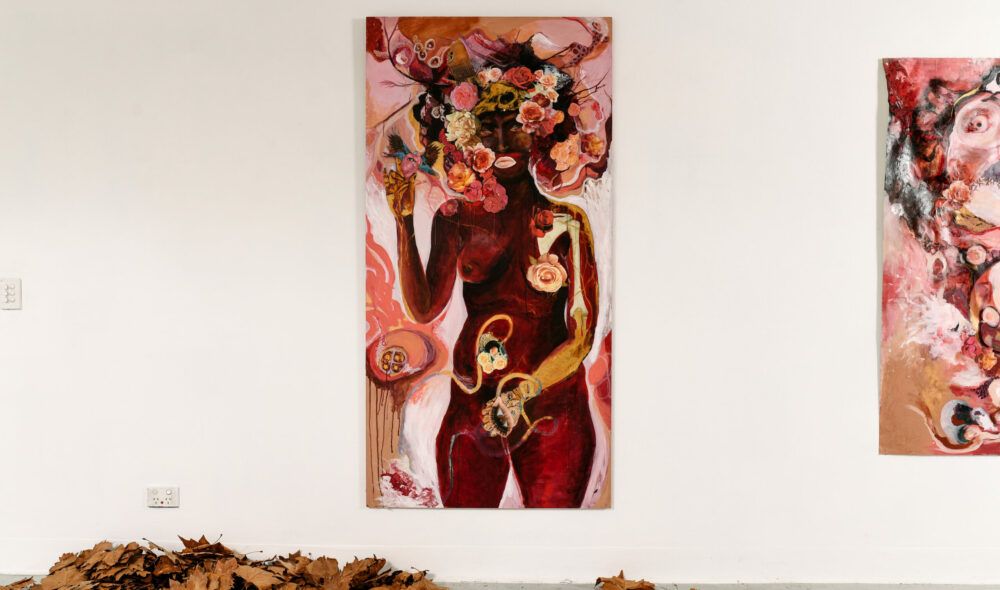
Photo: Morgan Sette
- Artwork Mitochondrial Eve (Mother)
- Artist Tailor Winston
- Year 2021
- Medium Mixed media collage on board
- Size 180 x 90 cm
- Price $1100
If you are interested in buying this artwork, please contact us at info@nexusarts.org.au or via the Contact form on this website.
The ‘Eve Gene’ : Mitochondrial Eve is the most recent matrilineal common ancestor of humanity that lived between 100,000 to 200,000 thousand years ago in Southern Africa. She is our universal ancestor that unites us all and mitichromal DNA contains all the genetic possibilities of humanity.
-
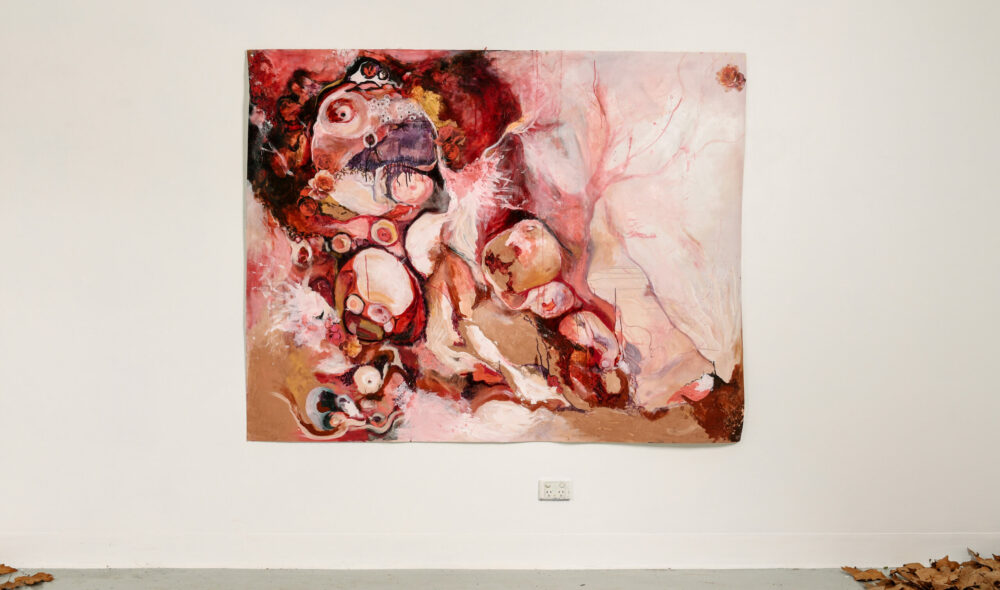
Photo: Morgan Sette
- Artwork Genealogical Nest (all paths lead to my ancestors)
- Artist Tailor Winston
- Year 2021
- Medium Oil, acrylic on recycled blind
- Size 188 x 147 cm
- Price $1200
A genealogical nest is a microscopic snapshot of Mitochondrial Eve’s hair. Hair is a map. It is a genetic blueprint where all paths lead to our ancestors.
This piece was created by looking at a hair under a microscope, topographical maps, and biological shapes and forms.
-
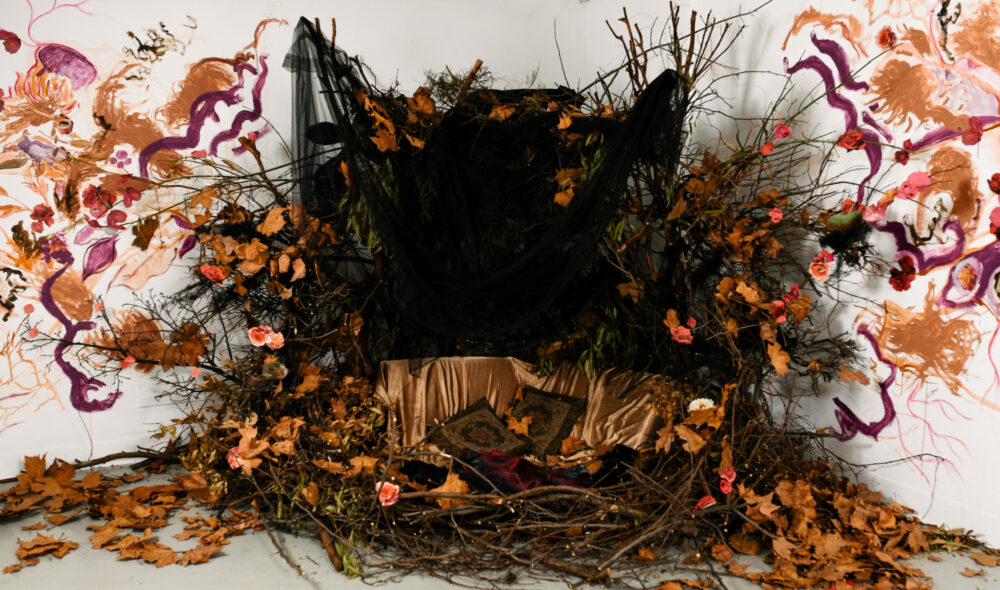
Photo: Morgan Sette
- Artwork Nest I
- Artist Tailor Winston
- Year 2021
- Medium Various species of branches, collage, fabric and hair
- Size Dimensions variable
- Price Not for sale
A nest is combination of intersecting materials to create a shelter or safe place. It is a home. The giant nest is much like a womb. It provokes feelings of tenderness, safety and creative potential. This conceptulizates the body in this way. Regardless of race, size, shape or gender, everybody has the right to feel safe in their bodies.
-
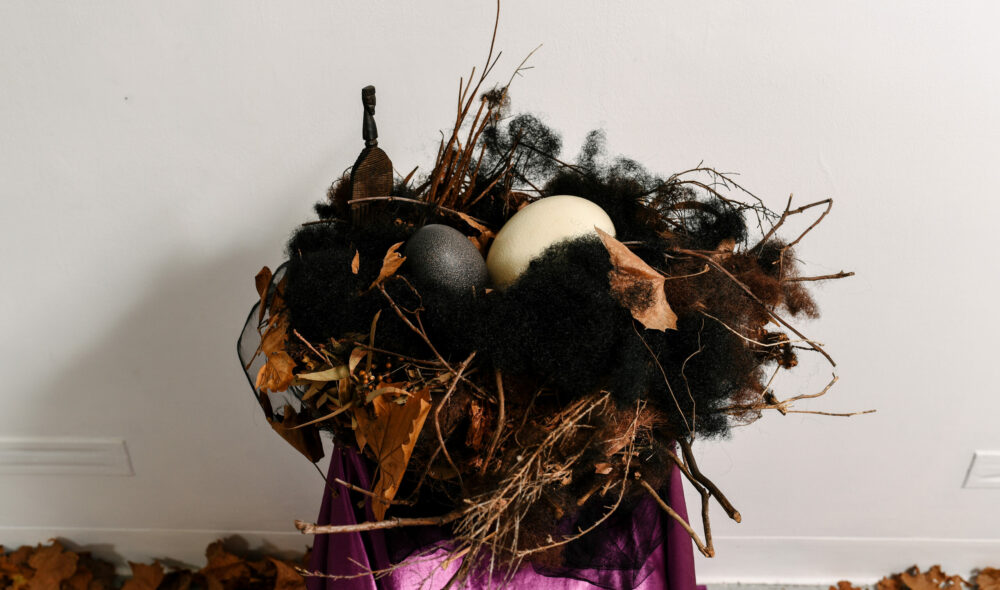
Photo: Morgan Sette
- Artwork Nest II
- Artist Tailor Winston
- Year 2021
- Medium Organic material, clay, Emu egg and ostrich Egg and human hair
- Size Dimensions variable
- Price Not for sale
The nests represents the reauthoring and decolonizing of black hair and bodies and challenging perceptions of otherness. The piece speaks about the alternative narritives surrounding beauty ideals by celebrating uniqueness and diversity. To stand up for oneself in a bold acceptance to authentically, or to love one’s self and others fiercely with tenderness, strength, and compassion is to claim sovereignty. For some, an act of resistance is simply to be and exist as themselves.
These works powerfully demonstrate the transformative effect of love as an equal act of resistance and demonstration of sovereignty.
Catalogue essay
Conversation piece: Mother talking to a child
Mother: [occupied weaving sticks into and constructing a large nest]
Child: [child wanders freely showing a level of excitement and enthusiasm as they explore the terrain. They come across a nest with eggs. Excited, the curious child peers into the nest and removes one of the eggs.]
Child: [excitedly runs to the mother] Mama, mama, look what I have found!
Mother: [turns around to look]
Mother: [shocked] Aiiiii! Where did you get that egg? You must return it to its home immediately!
Child: [shocked and confused by the mother’s reaction starts to sob]
Child: [clutches at the egg] Nooooo! It’s mine… I found it!
Child: It’s mine, it belongs to me!
Mother: [walks over to take the egg]
Child: [pulls away] No!
Child: [sobbing] But It’s not fair, I found it.
Child: [looks up through teary eyes] Why can’t I keep it? I promise I will look after it?
Mother: [softly] You cannot keep the egg, it is not right to take or touch something that does not belong to you. This egg holds life and if we take it away it will cease to live.
Mother. [Takes child by the hand and leads them to sit beside the large nest]
Mother: Come. Let me tell you a story. Mmmm, you know when I was younger some kids use to make fun of me because of my hair.
Child: [listens quietly while watching mother weave the nest]
Mother: The kids at school would whistle at me, and then they would chirp because they thought my hair was a refuge for birds. This is why I am making a nest. [Smiles]
Child: [eyes widen] What do you mean your hair is for birds? [child is perplexed]
Mother: Well, birds need to be safe, they need shelter, and a nest is good for the birds. It is their home, and a home should be a safe place.
Child: [looking down and fidgeting with a leaf in their hand] Were you happy or sad that kids make fun of your hair?
Mother: Hmmm. At first, I smiled and laughed along with them, but their words were like sharp sticks. They hurt and made me sad.
Mother: [pauses] There is a saying ‘when kinky hair is relaxed, people are too’.
Mother: I don’t think they understood my hair… sometimes when we don’t understand or are even very curious, we can be incredibly hurtful and cause much harm even without meaning to.
Mother: [looking stern] Just you like you reaching for the egg.
Mother: [gently reaches out and touches the child’s hair, face, or pats head signifying love and care, returns to the story] For a long time I wished my hair would sit straight.
Mother: That was the first time I shaved my hair off.
Child: [gasps] You cut off all your hair?
Mother: All of it! Not just once but three times!
Child: [eyes wide places hand over their mouth]
Mother: [continuing to build the nest] And do you know what happened?
Child: [shakes head]
Mother: It grew back! Each time it grew more wildish and untamed than the time before.
Mother: [pause] Nature always finds a way to survive. It is strong and resilient.
Child: [now more restless, performs throwing sticks towards, near Mother. This gives an example of the way kids like to entertain themselves]
Mother: I love your hair. [points to child’s hair] You know what, I love my hair too.
Mother: Over time I have come to understand my hair is my crown, it is like a map that connects with my life, my hair tells me stories of voyages and adventures.
Child: [once again engaged in the conversation] What stories? What adventures?
Mother: Well [touches hair] when I touch my hair like this, I can imagine I am on an adventure in Africa and I am meeting my ancestors, they look like me and they have hair just like me.
Mother: [pulling the child into an embrace and whispering] If you listen closely you can hear still hear their stories.
Child. [becoming still, frowns trying intensely to hear the silent stories]
Mother: I like those stories, they are like a map of my imagination, this is why I want to weave and build a nest for birds.
Mother: Making a nest for birds is weaving my body into a haven, everybody needs a haven.
Child: What is that? A haven?
Mother: A nest is a haven… it is a sacred space that protects the eggs which are full of endless possibilities, this is why we must protect and respect it. A nest is home.
Mother: [stands up and extends their hand to the child. They walk together to return the egg to its nest]
Child: [gently delivers the egg home into the nest] A haven is for birds to keep them safe?
Child: From now on I’m going to protect the birds and their eggs.
Mother and Child: [walk away holding hands]
Child: Mama I like your nest. Can I help?
Tailor Winston and Faye Blanch
Meet the artists & curators
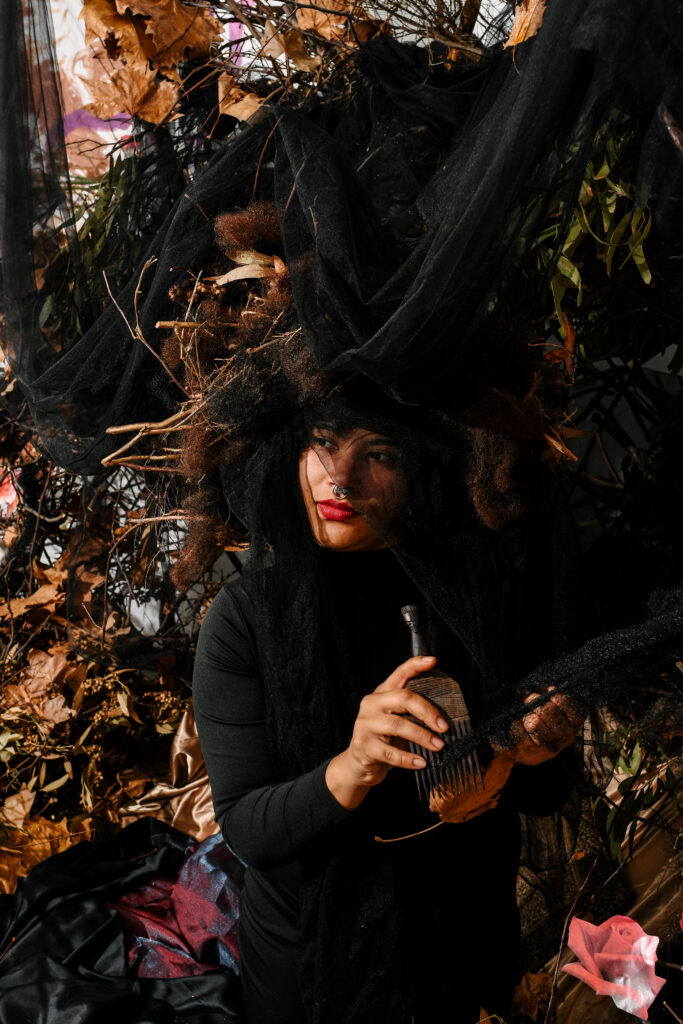
Tailor Winston is an emerging interdisciplinary South Australian artist. Born on Kaurna Land to African/American and Italian parents, Tailor explores the experiences of the human condition through Afro-surrealism, from the perspective of a biracial woman. Using visual art, performance, and spoken word, she seeks to open conversations exploring decolonisation, environmentalism, and spiritual identity. Tailor invites her audience to journey within and engage with participatory elements of her works, exploring interconnectedness through a collective generosity.

